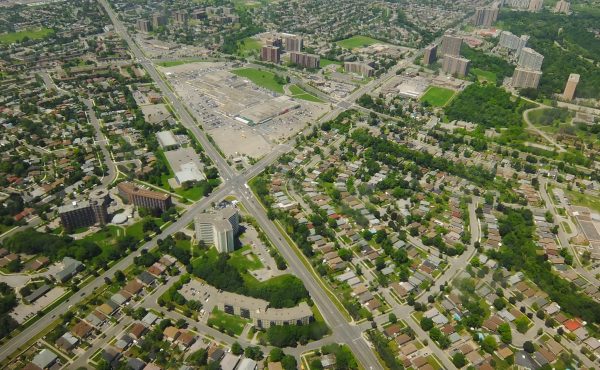
As in so many other fast-growing big cities, housing affordability has become Toronto’s ur-issue — the crisis that touches absolutely everything. Young people who don’t have an account at the Bank of Mom and Dad can’t afford to buy homes here. The rental market is increasingly feral, even as existing rental properties face the surreal threat of demolition.
Low- and median-income households, including those of newcomers, face existential budget woes. Housing costs, in turn, soak up income that could be used elsewhere (culture, restaurants, recreation, etc.). The knock-on effect undermines quality of life, adds crushing financial strain to the municipality, and drives up the cost of services provided by increasingly squeezed workers. Many will simply leave, taking with them their skills, potential and energy.
Housing, in sum, is about so much more than planning rules and supply.
So the question begs, has six weeks of mayoral jousting advanced the debate about how this city extricates itself from a calamity that has been years in the making?
Before unpacking that riddle, it’s important to acknowledge that the housing policy file, such as it is, has been fairly active in the past two years, whatever else you may think of the so-called solutions. City council in fairly short order passed new rules allowing intensification in all neighbourhoods, as well as rooming houses, garden suites and walk-ups, as well as along thoroughfares. The province, in turn, has rammed through planning reforms designed to massively up-zone around transit stations, ostensibly in the name of expanding supply, albeit only supply of a certain sort (450 sq.-ft one-bedroom condos).
In short, the next mayor takes office with some new-ish housing policies already in train.
What has the race further revealed about building on these reforms?
Certainly, the flurry of rhetoric about the lumbering progress of Housing Now — former Mayor John Tory’s strategy to build rental on city-owned sites — has been accompanied by candidate promises to earmark much more publicly-owned land for affordable rental (Josh Matlow), deliver projects without private partners (Olivia Chow), establish a new housing development agency (Mitzie Hunter), and add funds to the city’s rent bank (Ana Bailao).
There’s a grab bag of other pledges, some realistic, others just blather about moving faster, doing things we’re already doing or countering provincial law.
Yet for all the abundance of commitments and action plans, there are some obvious missing pieces, which the next mayor should take up. A few come to mind:
- Find a way to uproot bureaucratic processes that lead to departments working at cross purposes, a chronic and mostly unacknowledged problem. There’s always talk to streamlining and reducing red tape, but I’ve never seen the city undertake a rapid effort to definitively identify places where there’s intramural friction and resolve these once and for all.
- Engage the federal government in a serious conversation, with a specific endpoint, about why Canada Mortgage and Housing Corp., which is the agency responsible for distributing the tens of billions endowed to the National Housing Strategy, has so much difficulty processing loans for rental projects. Everyone agrees that affordable rental is the critical missing piece in our housing system, yet the one level of government that wants to spend heavily on affordable rental has delegated that task to an agency that lacks any sense of urgency about its mandate.
- Figure out how to unlock some of the massive amount of capital sitting in large public sector pension funds and other equity pools — a project that will require the mayor and the city, perhaps via Create TO, to engage in intensive negotiations with large asset management firms.
There’s already some activity in this space, just to be clear. The Downsview airport site is being redeveloped over the next few decades with tens of thousands of units of housing by Canada Lands and the real estate arm of Public Sector Pension Investment Board, which manages billions in retirement savings for federal entities like the civil service, the RCMP and the Canadian Forces. On a smaller scale, Tricon and the Canada Pension Plan Investment Board are investing half a billion in multi-unit residential projects across the GTA.
In both cases, scale brought to the table these large investment funds, which actually want rental properties in their portfolios because they generate the kind of long-term predictable income pension funds need to support their members. The City could theoretically do the same by bundling numerous municipal sites together instead of taking the Housing Now route, which involved numerous smaller scale RFPs with multiple development partners.
Interestingly, Mark Saunders, whose housing plan offers little that’s new, has been the only candidate to call on the federal government to add housing to the list of potential Canada Infrastructure Bank investments. (The CIB was established in 2017, amidst some criticism, with a mandate to co-invest $35 billion in major projects, such as transit and energy.)
The notion of housing as infrastructure surfaced briefly during the fall, 2022, race, but isn’t really part of the Canadian conversation. Yet in a growing number of regions, from the U.S. to Europe and Australia, advocates, experts and policy-makers have begun re-framing the way governments think about investment in social housing.
Governments invest in infrastructure to spur economic growth; in Ontario, this thinking has also fueled the use of P3s for hospitals, courthouses and long-term care facilities. The much more conventional approach to social housing — certainly in Canada — is for the state to grudgingly provide loans and operating subsidies to correct failures in the private market.
But jurisdictions that have embraced the idea that social housing is, in fact, infrastructure — and that such investments will deliver a return on investment via economic well-being and growth — have figured out how to move beyond the lazy assumption, still widely held (including by Saunders), that social housing is for society’s losers.
Recently, the New York Times published a deep dive into Vienna’s public housing miracle, which enables 80 percent of residents to qualify for low-rent, high quality, eviction-proof apartments. Typically, the article noted, tenants of social housing in Vienna pay just over a fifth of their post-tax income on rent; here, it’s not unusual for tenants to spend 30 to 50% of their pre-tax income on their leases.
“Imagine having to think about [rent] to the same degree that you think about your restaurant choices or streaming-service subscriptions,” observed the story’s author Francesca Mari. “Imagine, too, where the rest of your income might go, if you spent much less of it on housing. Vienna invites us to envision a world in which homeownership isn’t the only way to secure a certain future — and what our lives might look like as a result.”
The point is, we’ve had a decent canvassing of housing affordability issues in this election, but the debate and the policy-making has to go much further, and certainly beyond the equally lazy assumption that unleashing the private sector to build more and more supply will cure what ails us. The next mayor has to push the conversation well past the policy-making comfort zone; she or he would be well advised to look to places as diverse as Vienna and Downsview for inspiration on how to confront the problem that will define Toronto’s future.





One comment
AirBNB (and similar outfits) have removed many thousands of ordinary rentals from the supply. Can anything be done to reduce or eliminate this? If not, could a large tax of these residental places?